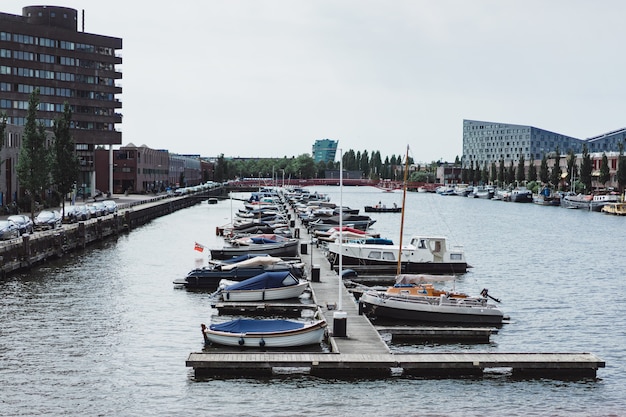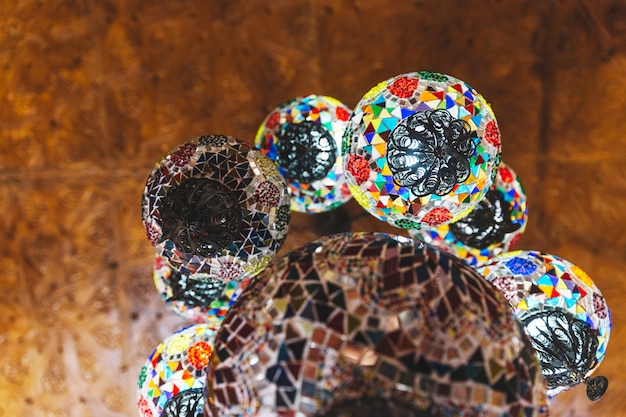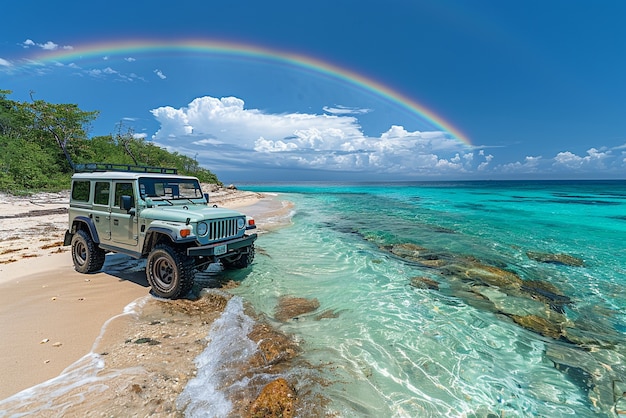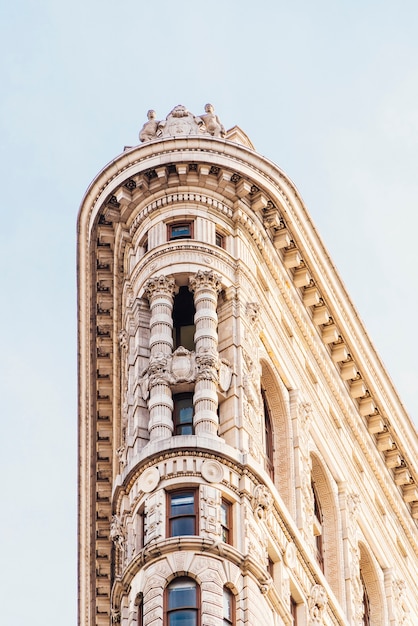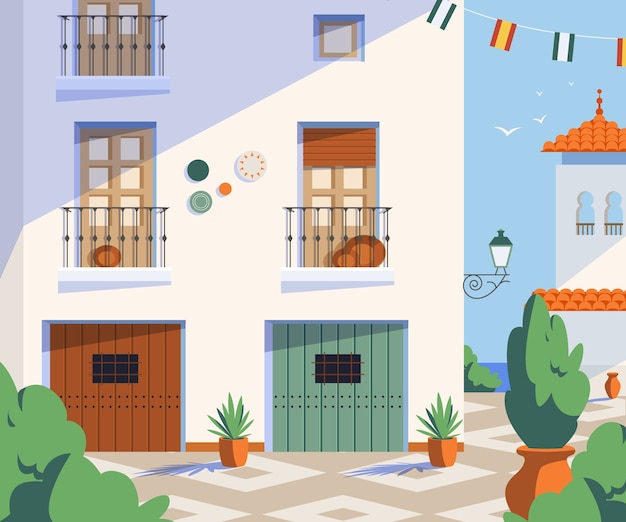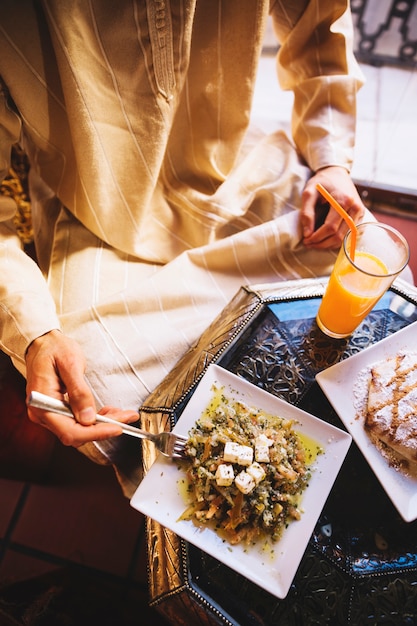
Traveling to Morocco is a true culinary adventure with a variety of delicious dishes to explore. Whether you’re a vegan or a meat-lover, Moroccan cuisine has something to satisfy your taste buds.
Moroccan food is famous worldwide, and for good reason. The use of spices and herbs in Moroccan recipes enhances each ingredient, while slow cooking helps to infuse and concentrate the flavors. Whether you’re new to Moroccan food or already familiar with some recipes, here are some of the most iconic dishes recommended by Safa of Moroccan Zest.
Let’s start with Morocco’s most famous dish: the Tagine. This savory meat-and-vegetable stew cooks for hours in a special clay pot, also called a Tagine. Common tagines in Morocco are made with fresh meat and vegetables like peas, artichokes, and zucchini. The famous Moroccan chicken with preserved lemon is a popular variation. Tagines are healthy, balanced meals that are very flavorful and hearty, with each combination of vegetables, meat, and spices offering a unique taste.
Another variation includes sweet-and-salty tagines, which combine a salty meat stew with caramelized fruits and roasted nuts. The result is a delicious sweet-and-salty flavor, with apricot or raisin tagines being the most common.
If you enjoy fish, try Moroccan fish tagines. They are made with a special sauce called chermoula, in which the fish is marinated for hours. The fish is then layered with potatoes, tomatoes, and other vegetables and cooked slowly to infuse the aromas. It can also be grilled, as in the spicy sardines dish.
Couscous is another famous Moroccan dish, made of steamed semolina topped with a sauce of vegetables, meat, and chickpeas. Traditionally served in large clay plates and eaten with the right hand, couscous is a staple in Moroccan families, especially on Fridays after midday prayer. There are many regional variations, with the most popular being couscous with seven vegetables and sweet-and-salty couscous with caramelized onions and raisins.
Zaalouk, also known as eggplant caviar, is a delicious side dish made with smoked eggplants, olive oil, and strong aromatics like cumin and herbs. It is served cold or tepid and is perfect when spread on homemade Moroccan bread or crispy baguettes.
Tangia is a specialty of Marrakech cuisine. This meat-based dish is known for its unique cooking method, where ingredients are mixed in a clay jar and buried in hot ashes for overnight baking. The result is tender meat and a flavorful sauce. If you visit Marrakech, trying Tangia is a must.
Harira is Morocco’s official soup, made with chickpeas, lentils, tomato puree, and aromatics. It’s a delicious and affordable dish, perfect for chilly nights. Adding a slice of lemon can enhance its flavor.
Cooked Moroccan sheep heads are a staple in Moroccan cuisine. They are cleaned, roasted, and mixed with special spices and herbs, resulting in a tender meat stew with interesting flavors.
Bastilla is a spiced pie with a mix of sweet-and-salty ingredients, usually made for celebrations but available in most Moroccan restaurants. Common variations include squab, chicken, and seafood Bastillas.
Moroccan snails are a popular street food, especially in winter. This spicy snail stew is believed to have body-warming properties and can be found in most Moroccan medinas and souks.
For those with a sweet tooth, Moroccan pastries are a treat. Made with ingredients like almonds, peanuts, coconut, and honey, the most iconic pastry is Kaaba Laghzal (Gazelle horns). Baghrir, or “thousands hole pancake,” is another favorite, served with warm melted honey and butter.
Moroccan dishes are often served with crispy baguettes or Khobz, homemade bread made with whole wheat and grains. It’s perfect with tagines or at breakfast with local honey and goat cheese.
Contrary to popular belief, Morocco is friendly for vegetarians and vegans. Many famous dishes have vegetarian variations, offering a tasty culinary experience.
Dates, figs, and other dried fruits are often served with tea to welcome guests. They are also commonly paired with Harira soup, creating a delightful mix of flavors.
Moroccan mint tea is an everyday drink, enjoyed during family gatherings. The basic recipe includes tea and mint, but variations with rose petals or orange blossom water are also popular.
When visiting Morocco, you’ll likely be welcomed with traditional mint tea, a gesture of hospitality.
Morocco is well-connected by flights from the UK, Europe, and other international destinations, with main airports in Marrakesh, Casablanca, Rabat, Essaouira, Agadir, Tangier, and Fez.
For food tours in Morocco, consider a Marrakech food tour with dinner or a tagine cookery class, or a full-day cookery experience in Fes.
Safa, a Moroccan blogger, designer, and writer, loves exploring Moroccan Medinas and shares her passions on her site Moroccan Zest.
